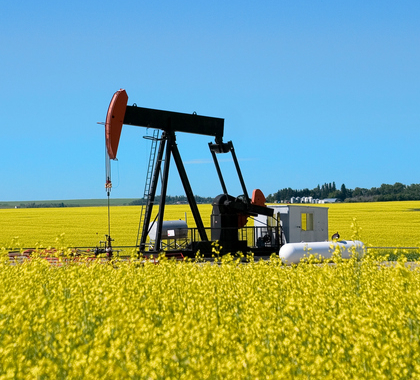New data released by the U.S. Environmental Protection Agency (EPA) shows that methane emissions at the nation’s largest oil and gas-producing basins are continuing to fall significantly, even with record-setting production.
EPA has made available the 2023 data from its Greenhouse Gas Reporting Program (GHGRP), a program requiring the reporting of “greenhouse gas (GHG) data and other relevant information from large GHG emission sources, fuel and industrial gas suppliers, and CO2 injection sites in the United States. Approximately 8,000 facilities are required to report their emissions annually.”
The data show a 44 percent drop in methane emissions overall from 2011. Since 2019, the Arkoma Basin in Arkansas and Oklahoma saw the most significant decline at 87 percent, while the Williston Basin in Montana, North Dakota, and South Dakota saw a 54 percent decline, and the Appalachian Basin, which runs from northeast Alabama to the shores of Lake Ontario in western New York saw a 52 percent emissions decline.
The Anadarko Basin in Kansas, Oklahoma and Texas saw a 45 percent decline since 2019, the San Juan Basin in Colorado and New Mexico saw a 39 percent decline, the Permian Basin in Texas and New Mexico saw a 32 percent decline, and the Gulf Coast Basin in Louisiana and Texas saw a 30 percent decline.
Again, these declines come at a time when production is still increasing. The Permian Basin, for example, has increased its production by 51 percent since 2019 while shedding 2.4 million metric tons of methane emissions.
EPA found similar conclusions in a report released in conjunction with the Clean Air Task Force in June, showing a 37 percent overall decline in methane emissions from 2015 to 2022. Meanwhile, the 2024 annual report of The Environmental Partnership, a voluntary collective of oil and gas companies “committed to continuously improving the industry’s environmental performance,” found its members, who represent nearly 70 percent of U.S. onshore oil and natural gas production, have decreased their flare volumes by 76 percent since 2019.
“Flaring” in oil and gas development refers to the controlled burning of natural gas that cannot be processed or sold. This occurs at oil production sites where gas is extracted along with oil but is not economically viable to capture and transport to market. Flaring produces carbon dioxide and smaller amounts of pollutants like methane and nitrogen oxides.
“Flaring intensity” refers to the amount of gas being flared in relation to the volume of oil being produced or to the overall level of production activity. It is a metric used to assess how much gas is being wasted through flaring and to gauge the efficiency and environmental impact of the flaring practices at a given site.
The oil and natural gas deposits found throughout the United States are abundant, affordable, and environmentally safe. Moreover, they can ensure the United States is the world’s largest energy producer well beyond the 21st century. Therefore, policymakers should refrain from placing unnecessary burdens on the natural gas and oil industries which, as these reports demonstrate, are committed to safe, environmentally responsible extraction and positively impact state economies.
Heartland Impact can send an expert to your state to testify or brief your caucus; host an event in your state; or send you further information on a topic. Please don’t hesitate to contact us if we can be of assistance! If you have any questions or comments, contact Cameron Sholty, at csholty@heartlandimpact.org or 312/377-4000.


